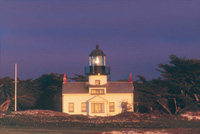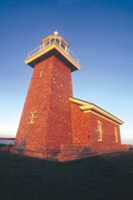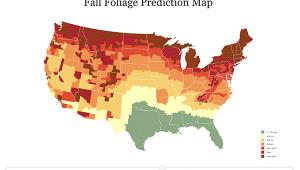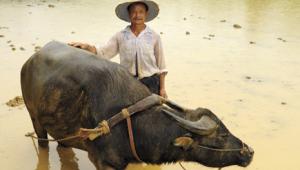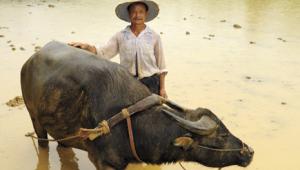West Coast Lighthouses
Guided By The Light
I've always loved the sea, and having grown up around, on, and in the ocean, I guess a fascination with lighthouses was inevitable. If I'm near the coast on a shooting trip and there is a lighthouse nearby I'll try to photograph it. It's fun to contemplate some day capturing all the West Coast lighthouses on film but with 36 or so in California alone it doesn't seem too likely I'll get around to them all. But one can hope. To date this endeavor has proven only a diversion of sorts but I hope that some day it'll evolve into a major project of some kind. You may also be fascinated by these Sentinels of Solitude, so I'd like to share some of my research strategies and shooting techniques with you. I'm hopeful that you'll find something in my approach that will be useful in your own quest for that ultimate lighthouse shot. Getting There Generally, I use web sites as a pre-trip planning tool and books and/or traveler's guides while I'm on the road. I have listed a few resources in the sidebar. You will undoubtedly be able to find dozens more, but by all means start with the US Lighthouse Society web site. Also, your local library, bookstore, or an online bookseller may have many more offerings that cover the geographic area that interests you. Don't think that research is only a pre-trip exercise. Many of my most valued books, maps, or charts were found while browsing local bookstores and tourist information kiosks at my travel destination. Lighthouses that have a visitor's center can be a great source of information and occasionally have well-stocked bookstores on site. Also, don't forget to pump the docents for information. These people are extremely well versed in facts and folklore and are more than happy to share their knowledge. Today, more and more lighthouses are being operated by non-profit organizations or private groups and many even offer lodging. Some are run as hostels and as such aren't too fancy. One, however, East Brother Island Lighthouse in San Francisco Bay near Point San Pablo, is an upscale bed and breakfast. Inn and hostel keepers are an excellent source for historical information as well as the occasional hair-raising story involving ghosties and things that go bump in the night. |
|||
Gear And Setups There are three basic shots you'll be looking for: the lighthouse and its environment, the lighthouse as architecture, and architectural details, each of course requiring a somewhat different approach. For shots showing the lighthouse in its majestic setting I usually prefer medium to long lenses. A zoom in the 100-300mm range for 35mm and moderate to long focal lengths for medium and large format will isolate the lighthouse and help minimize any keystoning or convergence of vertical lines. A big advantage of 35mm for this type of photography is that longer focal lengths are readily available, making certain viewpoints viable that are impractical for larger format users. For the multi-format photographer this means that shooting both 35mm and in larger formats can result in very different images. I will generally explore with the 35mm gear first, making mental or written notes on potential locations for large format shots. I hand carry the 35mm with zoom lens attached until I find a likely location and then, still handheld, I find exactly the camera position, height, and focal length that gives me the composition I want. Then I place the camera on the tripod, double check that my depth of field is adequate and shoot. |
|||
I'll always bracket my exposures but sometimes I bracket my composition as well. I may try zooming in or out to exclude or include foreground elements, try vertical and horizontal compositions, or capture different wave patterns in the foreground. Some lighthouses will allow you to shoot from several locations while others will be limited by the topography to one or two views. In both cases you're likely to have many variations available to you. Sometimes that's a wonderful thing and other times it'll drive you nuts. But it's all part of the fun. One accessory I use religiously is a bubble level that fits in the accessory shoe of my camera. This assures I don't wind up with the horizon tilted and the ocean looking like it's going to flow out of the shot. Some lighthouses look good in both evening and morning light. Pigeon Point north of Santa Cruz, California, is like that. It's also a hostel, and the lighthouse grounds are open to the public. I frequently camp nearby so I can capture it at first and last light. The Architectural View |
|||
Weather Tips When you have finished the shoot spend some time getting the salt and spray off your gear before you head for the local pub and your well-earned dark frothy beverage. A bottle of distilled water and a roll or two of shop strength paper towels are part of my permanent equipment inventory in the van. A little extra effort right after the shoot will prevent future equipment problems caused by corrosion. As you explore the lighthouse and its grounds watch for interesting and historic details. Commemorative plaques, intricate wrought iron work, or other vignettes will help you to tell the complete story of the lighthouse. If you can actually enter the lighthouse itself you may even be able to take shots of the Fresnel (say: Fre-nell) lens and its rotational mechanism. |
|||
Who knows, someday we may bump into one another shooting some light keeper's cottage, and after the sun goes down we can share one of those dark, frothy beverages. Sources For Lighthouse Information |
